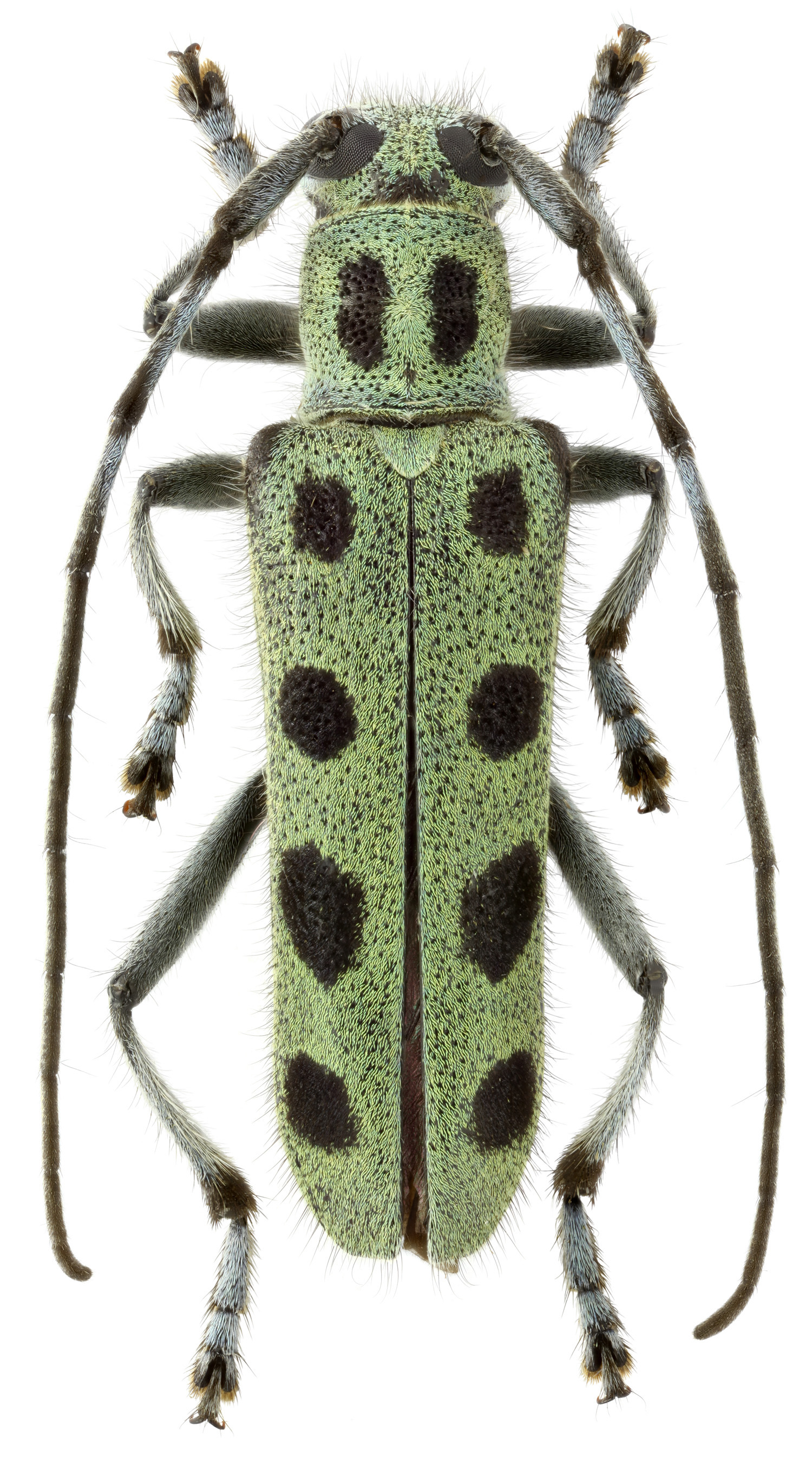Saperda octomaculata, a species of of North-East Asian deciduous forests (Japan, Korea, Mongolia, North China, Russia), has been described from Russian Far East by Constantin Blessig in 1873 [▽].
S. octomaculata larvae develop in both branches and trunks of weakened, dying or freshly dead deciduous trees (often in Rosaceae - Padus, Prunus, Malus).
They feed subcortically, creating straight or meandering galleries and pack them with frass. The first overwintering under bark, before the second one mature larvae enter the sapwood and create in
the depth ca 1.5 cm hook-shaped pupal cell with entry corridor plugged with frass. Pupation and hatching in the next spring. Life-cycle 2 years. Adults, active from June to August, can be found on the host
trees where they feed on bark of thin shoots (maturation feeding) [✧].
| Body length: | 9 - 15 mm |
| Life cycle: | 2 years |
| Adults in: | June - August |
| Host plant: | polyphagous in deciduous trees (Padus asiatica, Prunus maackii, Prunus armeniaca, Malus, Ulmus, Syringa, Ace etc.) |
| Distribution: | Russia (East Siberia, Far East), Japan, Mongolia, North China, Korea |
The depicted male beetle was collected in Anisimovka (Анисимовка) village environs (Shkotovsky district, Primorsky krai, Russia) on June 17, 2011.
Collected by Maxim E. Smirnov
[▽]
Blessig C.:
Zur Kenntniss der Käferfauna Süd-Ost-Sibiriens insbesondere des Amur-Landes. Longicornia.
Horae Societatis Entomologicae Rossicae, St. Petersbourg 9 (3) [1872]: 193-260, 1873.
[download  ]
]
[✧]
Cherepanov A.I.:
Cerambycidae of Northern Asia, Volume 3 - Laminae Part III.
Oxonian Press, New Delhi: 395pp [pages 37-43] , 1991.
[download  ]
]


